On April 4th…
“History is the torch that is meant to illuminate the past, to guard us against the repetition of our mistakes of other days. We cannot join in the rewriting of history to make it conform to our comfort and convenience.”
~ Claude G. Bowers
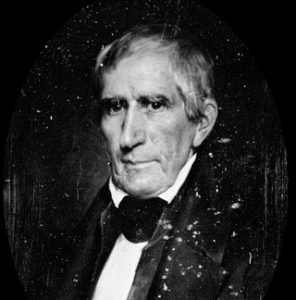
1841 – President William Henry Harrison died after serving only 32 days in office, leaving him with the unfortunate presidential record of shortest term in office.
Ironically, the man with the shortest White House tenure delivered the longest inaugural address in history, which may have been his undoing. His speech, delivered on a bitterly cold March morning, clocked in at one hour and 45 minutes. Harrison went to bed at the end of inauguration day with a bad cold that soon developed into a fatal case of pneumonia.
Harrison left behind a widow, Anna, and three surviving children. His grandson, Benjamin, became the 23rd president of the United States in 1889.
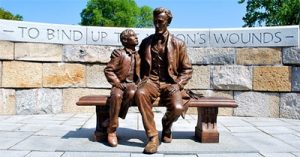
1865 – President Abraham Lincoln visited the Confederate capital of Richmond, Virginia, one day after Union forces captured it. Lincoln’s ship could not pass several obstructions that had been placed in the river by the Confederates so 12 soldiers rowed him to shore. He landed without fanfare but was soon recognized by some black workmen who ran to him and bowed. The modest Lincoln told them to “…kneel to God only, and thank him for the liberty you will hereafter enjoy.”
Accompanied by his son, Tad, a small group of soldiers and a growing entourage of freed slaves, Lincoln walked to the Confederate White House and sat in the chair belonging to Confederate President Jefferson Davis. He then walked to the Virginia statehouse and saw the chambers of the Confederate Congress.
That night, Lincoln dreamt of “the subdued sobs of mourners” and a corpse lying on a catafalque in the White House East Room. In the dream, Lincoln asked a soldier standing guard “Who is dead in the White House?” to which the soldier replied, “The President. He was killed by an assassin.” Lincoln woke up at that point but the dream continued to haunt him.
Ten days later, Lincoln was assassinated at Ford’s Theatre in Washington, D.C.
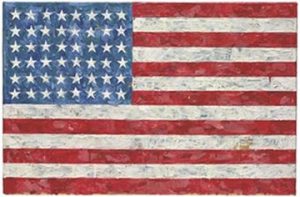
1918 – A plan was passed by Congress at the suggestion of U.S. Naval Captain Samuel C. Reid in which the American flag was changed to have 20 stars, with a new star to be added when each new state was admitted, but the number of stripes would be reduced to 13 so as to honor the original colonies (in 1795, the number of stripes had been increased to15 to reflect the entry of Vermont and Kentucky as states of the Union). The act specified that new flag designs should become official on the first July 4 (Independence Day) following admission of one or more new states. The most recent change, from 49 stars to 50, occurred in 1960 when the present design was chosen, after Hawaii gained statehood in August 1959.
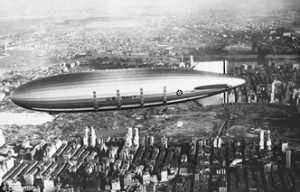
1933 – The dirigible Akron crashed in New Jersey, killing 73 people in one of the first air disasters in history. The U.S. Navy was using the airship – at 785 feet in length, it was the largest airship built in the United States when it took its first flight two years earlier – to obtain technical data over New Jersey. It was well-known that dirigibles could experience problems in bad weather, but despite the violent thunderstorms in the area that day, the Akron was not grounded.
While in the air over the Atlantic Ocean, a miscommunication over directions by crew members sent the Akron directly into the storm instead of around it. The storm’s winds caused the ship to plunge nearly 1,000 feet in a few seconds.
The crew then made its second mistake: the blimp’s water ballast was dumped in order to make the flying ship rise. However, the ballast dump thrust the blimp up too far, too fast. Critical devices and cables were destroyed and all control was lost. The Akron plunged into the ocean. The disaster didn’t end there.
The rescue airship J-3 was sent to help the Akron crew. It also crashed in of the storm, killing two of the seven crew members on board. Only three of the Akron’s 76 crew members survived the disaster. One of the survivors was the commander who had ordered the fateful ballast dump.

1960 – Clocking in at three hours and 32 minutes, William Wyler’s Technicolor epic Ben-Hur was the behemoth entry at the 32nd annual Academy Awards ceremony. Setting an Oscar record, the film swept 11 of the 12 categories in which it was nominated, including Best Picture, Best Director and Best Actor (Charlton Heston).
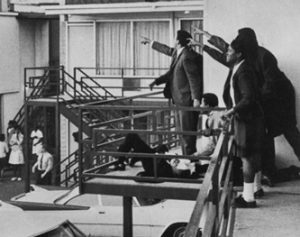
1968 – Just after 6 p.m, Martin Luther King Jr. was fatally shot while standing on the balcony outside his second-story room at the Lorraine Motel in Memphis, Tennessee. The civil rights leader was in Memphis to support a sanitation workers’ strike and was on his way to dinner when a bullet struck him in the jaw and severed his spinal cord. King was pronounced dead after his arrival at a Memphis hospital. He was 39 years old.
Compiled by Ray Lemire ©2018 RayLemire.com. All Rights Reserved.